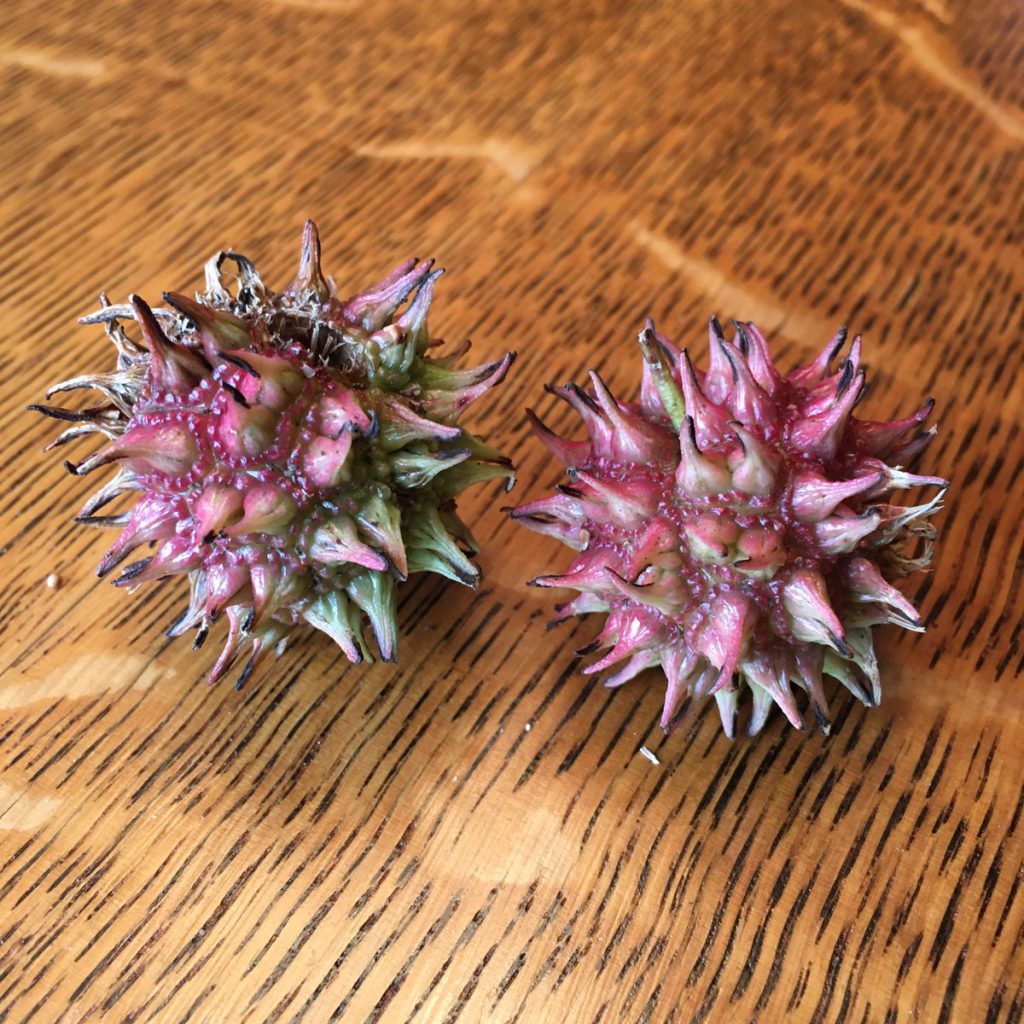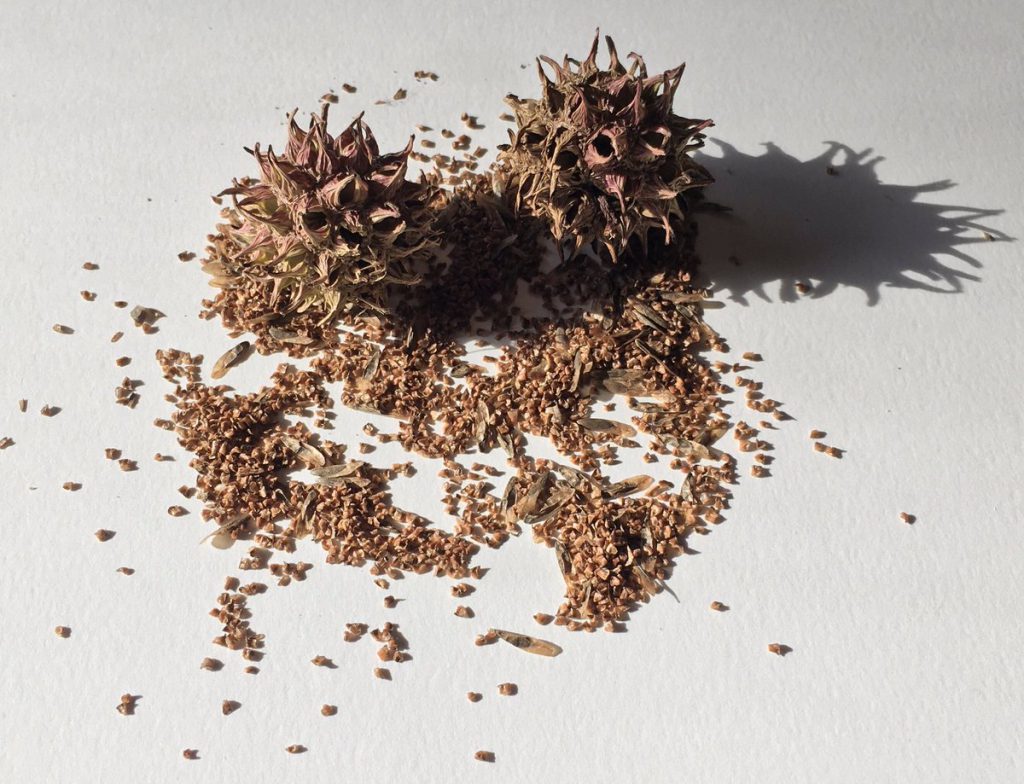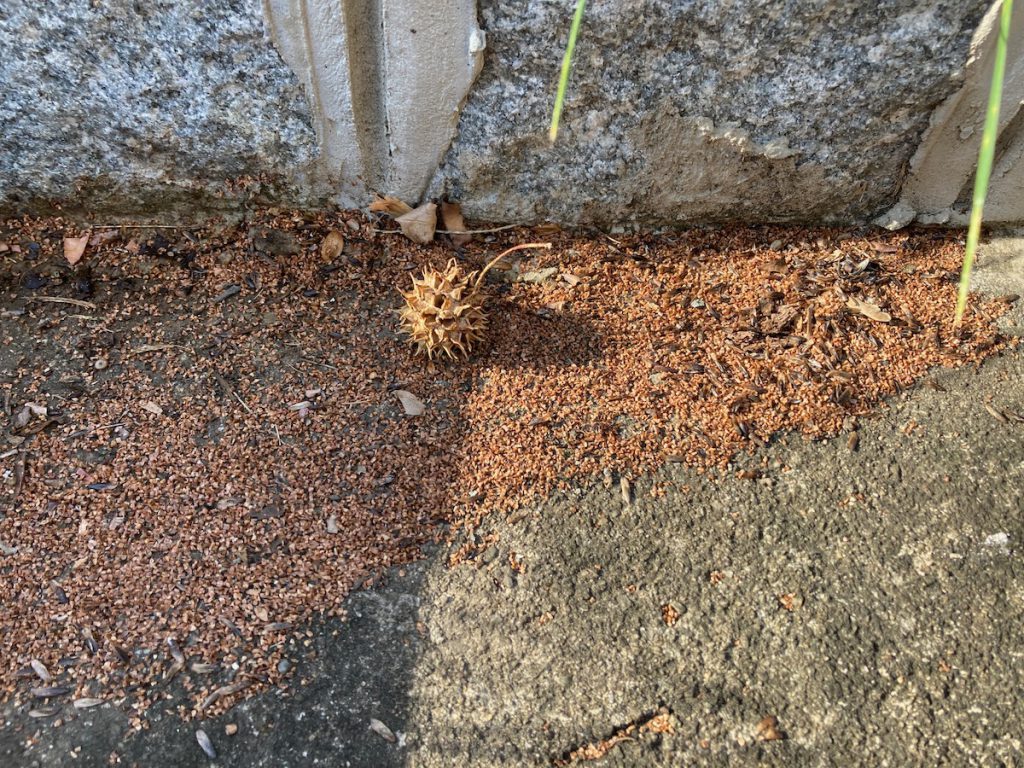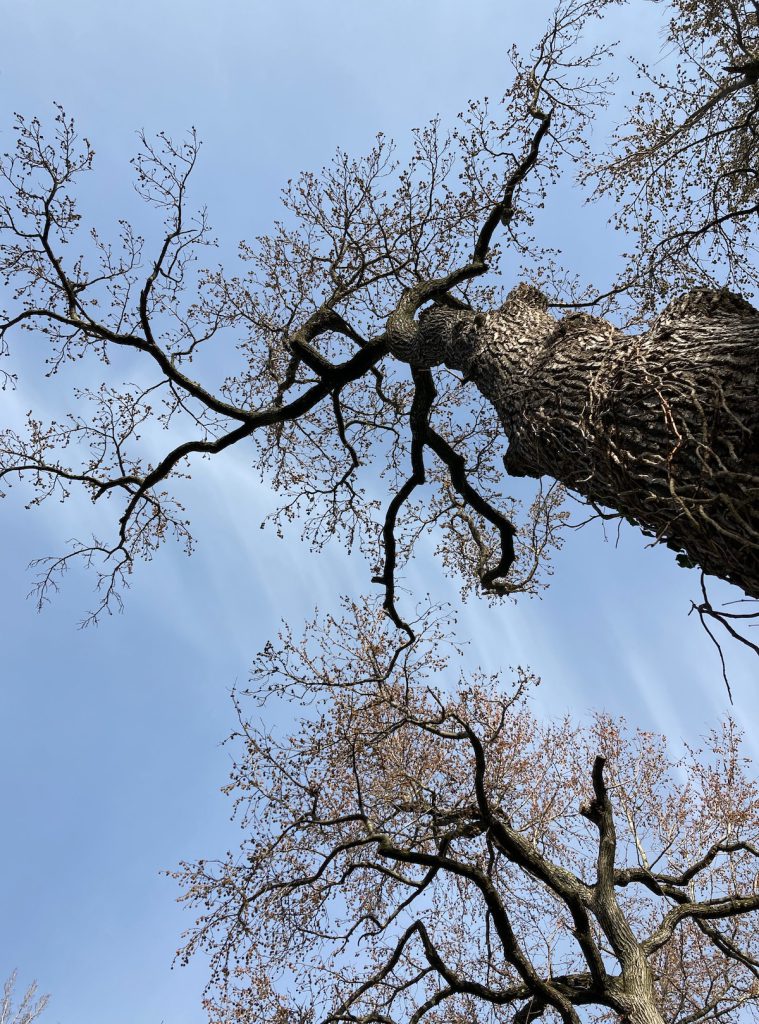this most important thing
“I cannot think why the whole bed of the ocean is not one solid mass of oysters, so prolific the creatures seem.”
— Sherlock Holmes

Ever since moving to the yellow house some seventeen years ago, I have thought about the cluster of sweet gum trees (Liquidambar styraciflua) along the block, some of which are plainly older than our house (built 1896 and one of the oldest on the street, which dates to when Montclair was still partly an agricultural town). The oldest sweet gums are tall, with boughs spreading in a high canopy and producing an abundance of biomass at each season: flowers; leaves, which fall in mid-November; and the spiky globes of the pods which typically fall at the end of December. I have raked and gathered bushels of the pods, and thought about them: aesthetically, as Christmas-tree ornaments (spray-painted gold), and as sources of literary inspiration (see The Windhill Bequest). I am not, however, anything more than an amateur botanist and sometime alumnus of the San Francisco Weedwalks. So it was only last year that I noticed another aspect of the plant’s cycle. I brought indoors two early fallen pods, still sheathed in a greenish pink husk, and put them in a small bowl. And promptly forgot them for a few days. They dried out, and opened, and at the bottom of the bowl I found hundreds of tiny seeds. Outside, I saw doves scratching amid the fallen pods, I thought of vanished forests, and the passenger pigeon.

And today while raking leaves (that ridiculous suburban dance, a little late this year), I paused for a moment. Off in the distance there was a rumble of a passenger jet taking off from Newark. Looking up, I saw a tiny, almost invisible fall of golden seeds from the gum trees overhead, turning silently until, with a noise of unseen raindrops, they hit the leaves I had raked. The sweet gums cast billions of seeds each season. In all the preceding years I had never noticed this most important thing.

I looked up in other trees, and noticed birds, sparrows and doves, moving among the pods and not waiting for the seedcast. When I saw that a layer of the seeds covered parts of the terrace, I put down a sheet of paper at random and after about two hours I collected half a teaspoon of the seeds, each one barely the size of a mustard seed. That amateur conjecture about the passenger pigeon does not now seem so unlikely. The trees here were probably young saplings when the passenger pigeon went extinct.
I suppose I had been thinking about life cycles of plants and their rôle in an interdependent ecosystem after reading an essay by Chris Brown on the industrial agricultural countryside: “what I remember is the paradox that all that vast green countryside was so completely devoid of wild nature”. And having read “Or All the Seas with Oysters” by Avram Davidson, I should of course have been primed to pay more attention to the reproductive abundance of organisms as an inherent aspect of competition in those interdependent systems.
The pods will come down, empty, a month from now (usually around the first snow). By that time, I will have looked in the Journals of Henry David Thoreau to see if he has written on the sweet gum; and I will have read William B. Mershon’s book, The Passenger Pigeon (1907), and possibly something a bit more up-to-date. I wonder if the seeds are edible for humans.
Forget that old saw, from tiny acorns great oaks: when it come to small beginnings, the sweet gum outclasses the oak.

[This essay took half an hour, and seventeen years, to write.]
